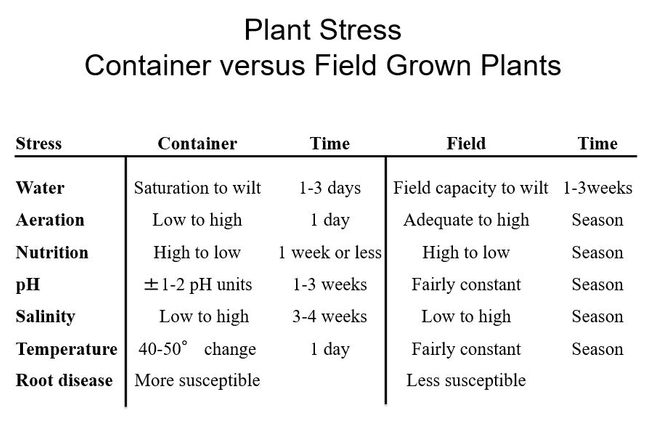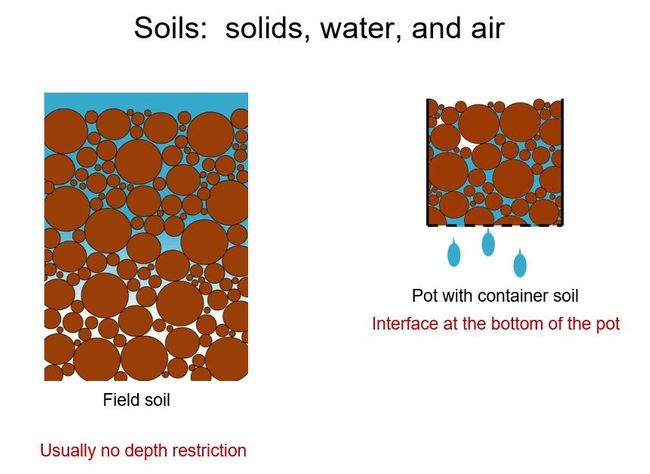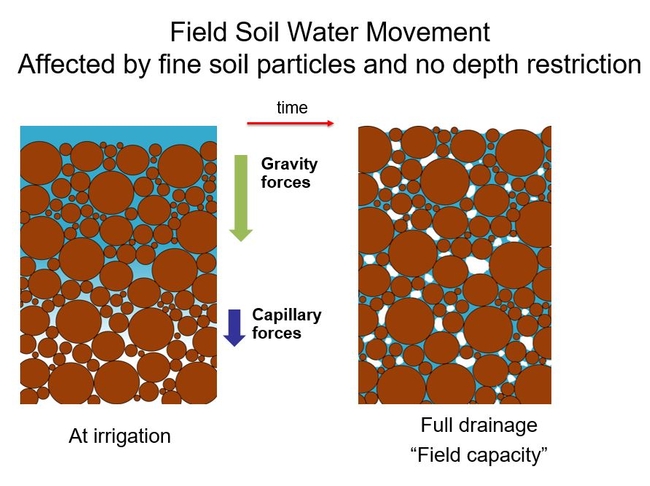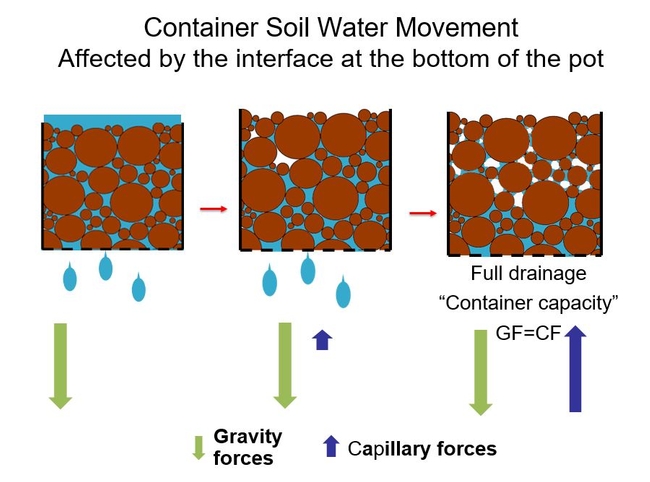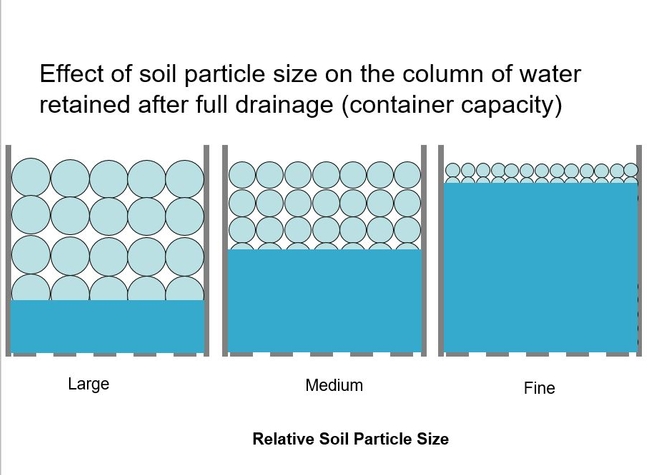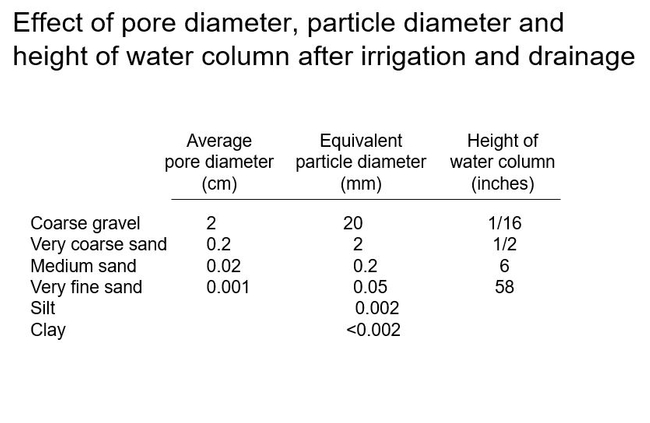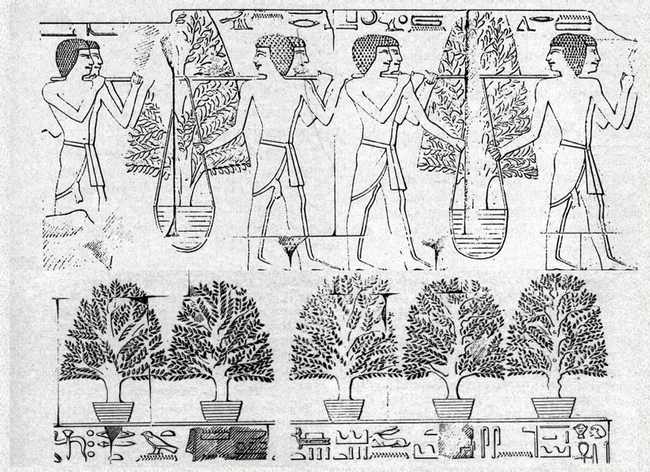
First some basics: A container soil, as with any field soil, must provide a reservoir for moisture, air, mineral nutrients, and anchorage for plants. A container limits the soil volume that roots can develop in and is relatively shallow in depth. As a result, plants grown in containers are subjected to more intense environmental stresses than those grown in a field. That is why growing in containers requires precision in irrigation and fertilizer management and is often fraught with plant problems and even disasters.
Why not just use field soils in containers? As mentioned, they are relatively heavy; consequently they are expensive to ship and are more difficult to lift and move in the nursery. Moreover, field soils hold too much water in containers. An understanding of the physical forces that are acting on water in the field and the container helps explain this. The first thing to note is the effective depth of the two situations, field versus container. Good agricultural field soils have no physical depth restrictions to a developing root system (e.g. a mature fruit tree root's often only need to colonize the top two or three feet of soil, while the effective soil depth is often greater). However, a container of course limits the depth of the soil and the drainage water interfaces with the ambient air at the bottom of the container.
When water is first added to a field soil, gravity forces pull the water in the water-filled pores down. Below the saturated zones, capillary forces help pull water deeper too. (These forces are a result of the small- pores or capillary-like spaces). When full drainage has occurred, water movement is mostly at equilibrium. The soil is said to be at “field capacity”. (This term is useful to describe the point in time when the water holding capacity for a field soil is measured).
The same forces affect the movement of water in containers but in a different way. At first gravity is pulling the water downward out of the water-filled pores, and water drains out the bottom of the pot. But as water drains, the upper soil profile begins to form capillary-like spaces, and capillary forces begin to tug water upward. As water continues to drain, the same upward capillary forces begin to tug upward at the bottom of the container. After several minutes of drainage, the upward capillary forces on water equals the downward gravity force, and water movement is mostly at equilibrium. The container stops draining. The soil is said to be fully drained or at “container capacity”. (This term describes the point in time at which water and air holding capacity is measured for container soils).
The capillary forces tugging upward is related to the pore diameter. The smaller the pore diameter (the tinier the capillary) and the more the capillary pulls upward. Smaller soil particles make smaller pore diameters and will result in a higher column of water at container capacity. Simply this is seen below.
The rise of the water column can be calculated based on soil particle size. Here are examples of various soil particles and their pore diameter, particle diameter, and resulting height of the water column at container capacity.
Field soils are composed of the smallest particles in this table: clay, silt, and various sizes of sand. This table illustrates that, after irrigation and drainage, even a pure medium sand would create a water column of about six inches and saturate the entire soil to the top of a 6-inch-high (gallon) container. As I mentioned earlier, the soil has to provide air to the roots (beside moisture, etc). And now you can see that field soils would create a saturated root environment in a container after an irrigation. You can't have the roots drowning for very long. For this reason, field soils work poorly for plants grown in containers. Container soils have to contain large soil particles!
Next: Water and air holding capacity of container soils.
*Figures and tables adapted from: Management of Container Media by Richard Evans, UC Davis, for the class, ENH 120.
